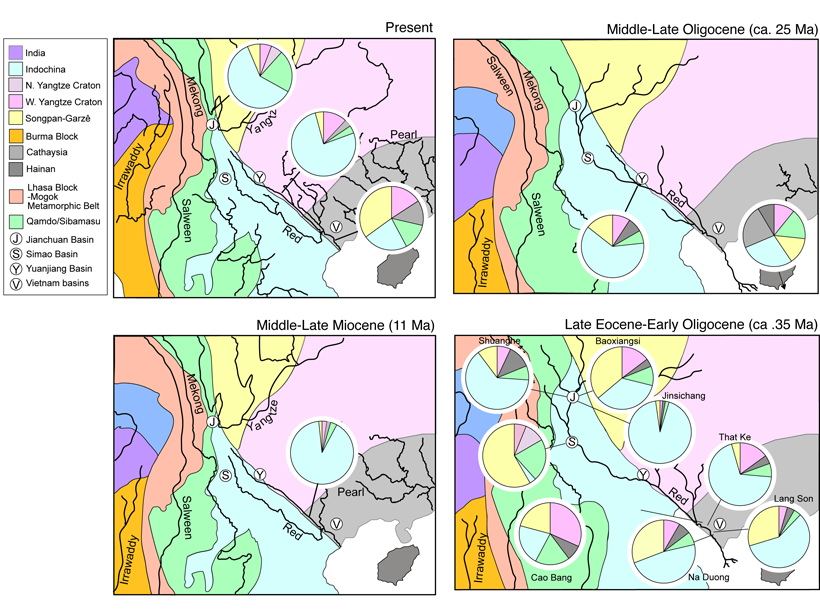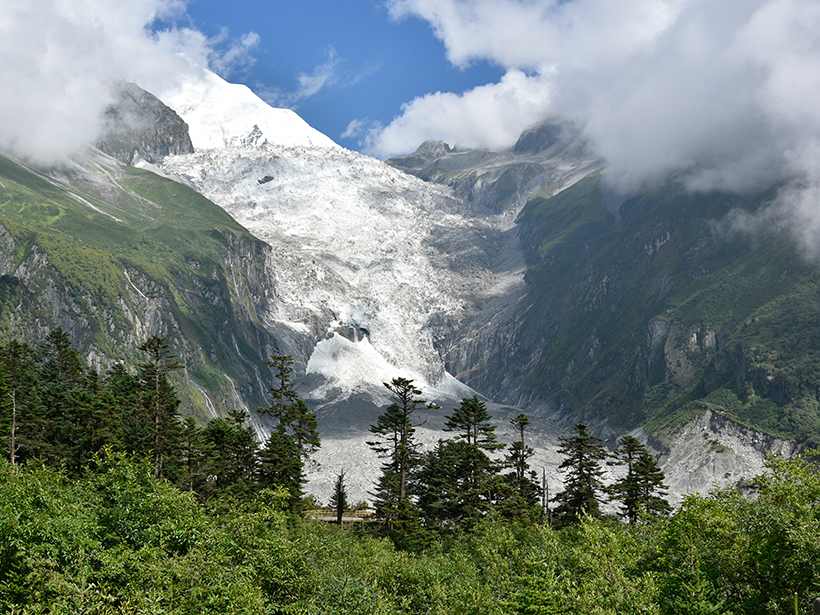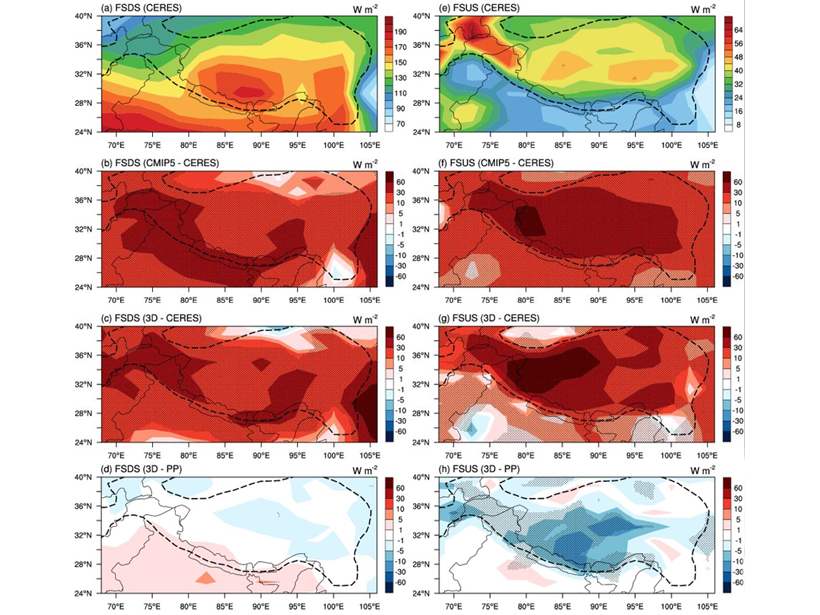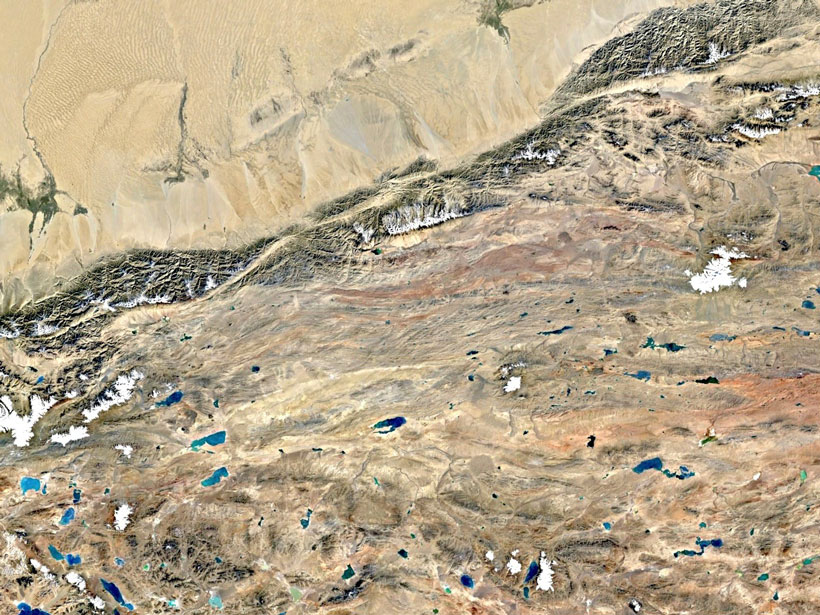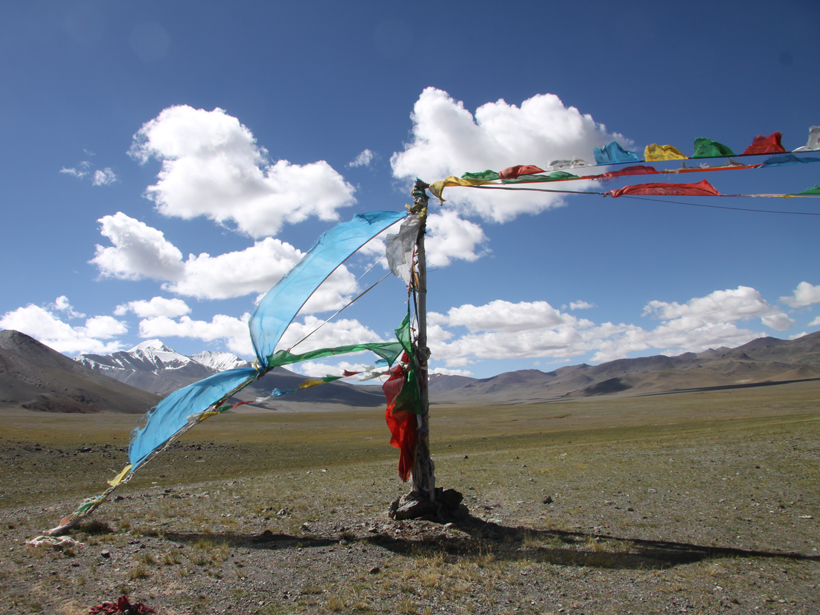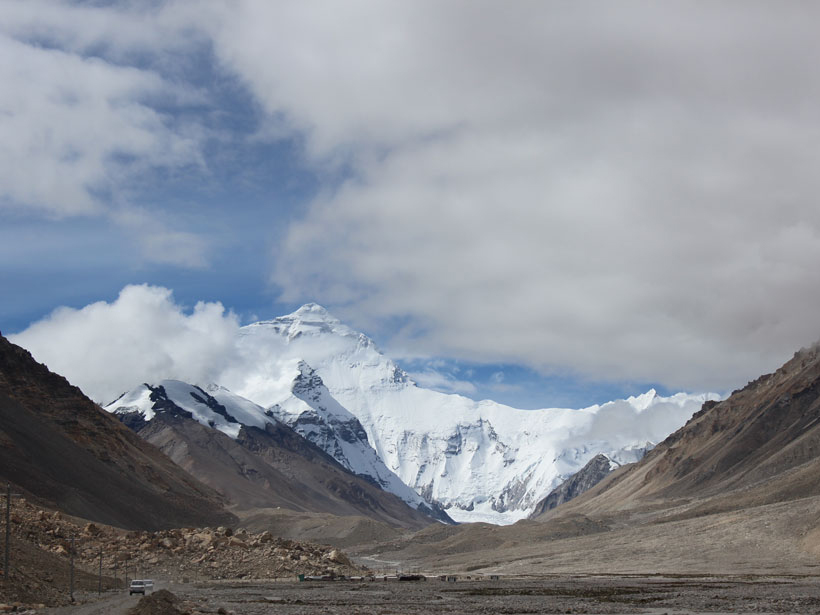The history of river system in southeast Tibet and Indochina reconstructed using the ages of thousands of zircon sand grains in modern and ancient river sediments.
Tibetan Plateau
The Give and Take of Mercury in Glacial Landscapes
As glacial ice melts, toxic mercury is released into the environment. But a new study shows vegetation may be an effective cleanup crew.
3D Radiation-Topography Interaction Warms Up Tibetan Plateau
3-D radiation-topography interaction, which can increase the sunlight absorption by the surface, is missing in all climate models, causing strong cold biases over the Tibetan Plateau.
New Insights into Continental Deformation in Northwestern Tibet
A new surface velocity map shows strain localized along major strike-slip features, suggesting the central Tibetan Plateau is not deforming as a fluid in response to gravitational collapse.
A Landscape Shaped by Wind
High-altitude aeolian research on the Tibetan Plateau offers insights into the past, present, and future.
Fossils Provide New Clues to Tibetan Plateau’s Evolution
The bones of ancient rhinos, elephants, and fish constrain when the Tibetan Plateau rose high enough to prevent migration, a move that forced animals to adapt to high-altitude conditions.
The Competing Climate Effects of Elevation and Albedo
Variations in surface reflectivity are as important as surface elevation changes in determining regional climate at nonpolar latitudes, according to a new modeling study.
Unraveling the History of the India-Asia Collision
A study of deformed and metamorphosed rocks exposed in Tibet’s Lopu Range suggests that episodes of crustal shortening and extension during the evolution of the Himalaya are related to subduction processes.
Advancing a Multisphere Approach to Third Pole Research
The International Workshop on Land Surface Multi-spheres Processes of Tibetan Plateau; Xining, Qinghai Province, China, 8–10 August 2016
Diagnosing Cryptic Remagnetization in Sedimentary Rocks
To understand the ancient movement of Earth’s tectonic plates, comprehensive magnetic and petrographic studies are needed to detect secondary magnetization in carbonates and other sedimentary rocks.

